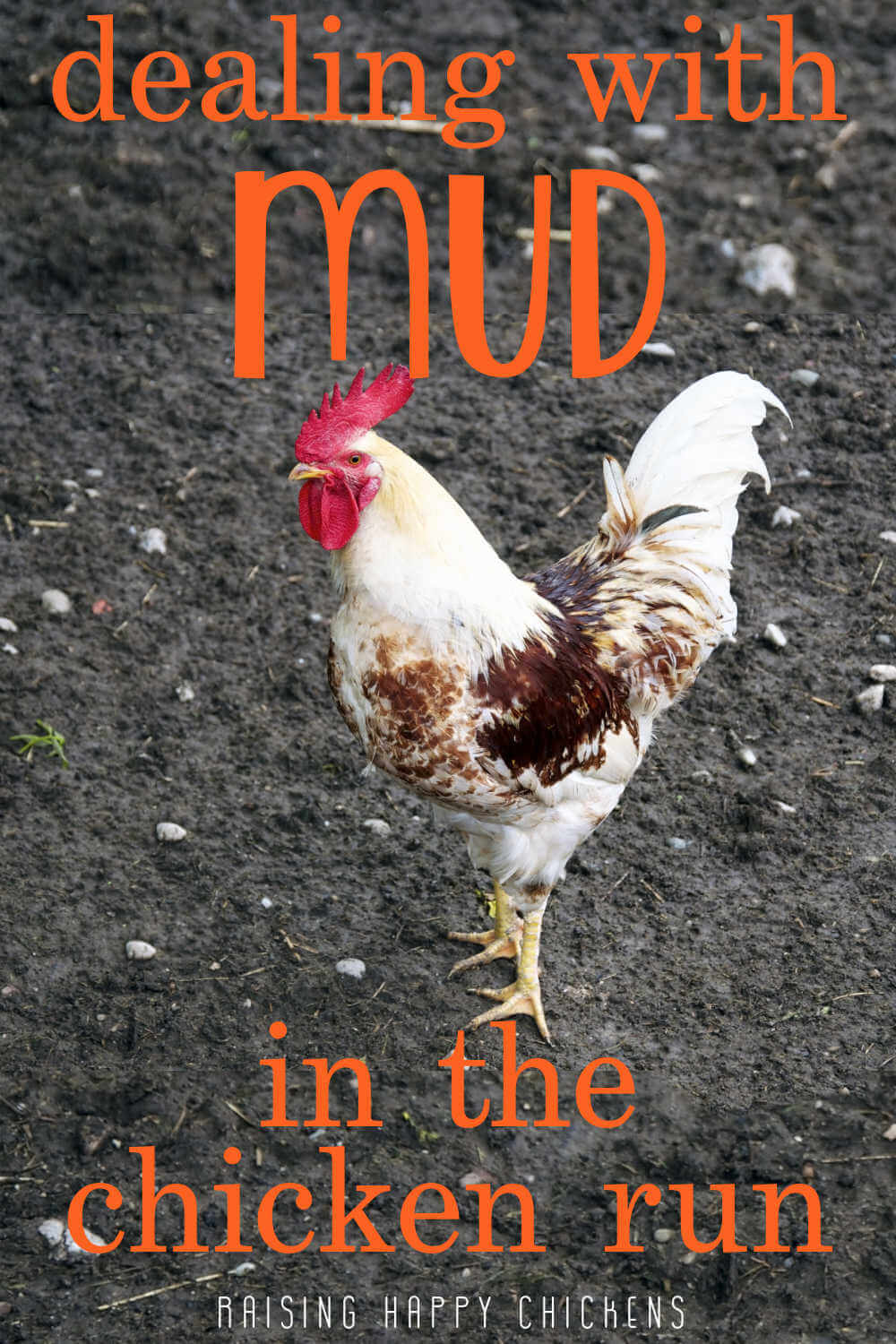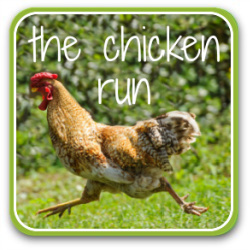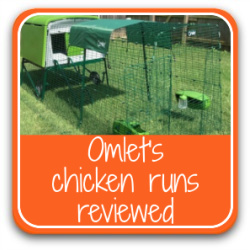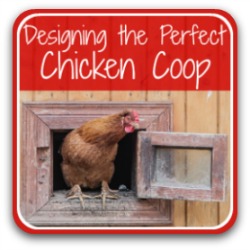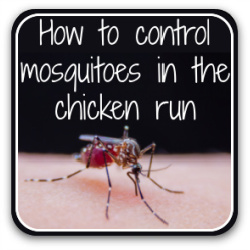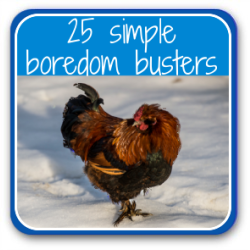- Home
- Chicken runs
- Mud
The muddy chicken run: what causes it and how to fix it.
In the summer, it's a grassy haven for happy hens. In winter, think rain, snow, fog – and a muddy mess.
Too often, chicken coops and their runs are situated without much thought.
And although coops are frequently decked with everything from chandeliers to curtains, windowboxes to wallpaper (yep, really!), runs tend to remain the poor relation.
Which is how they often end up, particularly in winter, looking more like a mudbath than a place chickens would like to spend their time.
This article covers why mud in the run can become a health and safety issue both for chickens and for their people, how to identify why mud is taking over, and what can be done about it.
Don't skip this. If possible, plan for your run before you start building your coop. Once you have a flock, trying to move the run - unless it's a very small one - will be much more difficult.
Why is a muddy chicken run a problem?
Any area where chickens are standing on wet land is a potential health hazard. Here's why.
1. Welfare needs cannot be met.
Two of the most important welfare needs of a chicken are being able to scratch and forage, and being able to dustbathe. It's hopeless to try either of those things on a blanket of mud.
Being unable to satisfy those needs can give rise to boredom which in turn will inevitably create a number of problematic behaviours: feather-pecking, aggression and egg-eating to name but a few.
2. Increased danger of bumblefoot.
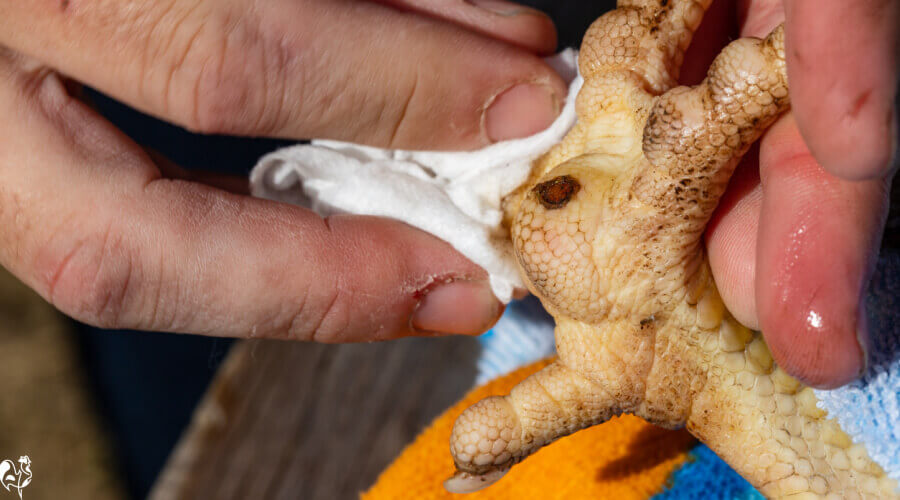 A Bumblefoot lesion in a chicken foot.
A Bumblefoot lesion in a chicken foot.It's not only dirty bedding in the coop that causes bumblefoot. Wet conditions combined with poop can host a variety of bacteria and viruses, including E.coli, staphyloccocus, campylobacter and norovirus(1).
Any slight lesion in the pad of the foot will cause an ideal environment for those infections leading to abcesses and pain. Getting rid of it is time-consuming and difficult.
3. Danger of hosting Avian Influenza (bird flu).
Bird flu is a fatal illness which spreads among flocks by chickens coming into contact with infected poop and feathers from wild birds, in particular waterfowl.
Infected poop releases the virus into water or, in this case, mud, and is able to sustain its ability to produce disease for long periods there(2, 3).
Find more details about bird flu here.
4. Danger of slipping!
Been there, done that!
Any muddy area in a run is a potential hazard for humans as well as chickens. For chickens it can result in slipped tendons; for humans, anything from a broken hip to (as I know to my cost) torn ligaments.
Which, in my case, took more than six months to heal.
If you purchase a product through links on this page, I may receive a small commission at no extra cost to you. I only recommend products I have bought (or would buy) myself, and which I believe will genuinely benefit you. You can read my full disclosure policy here.
What causes a muddy chicken run?
The way to make a mudbath less muddy is to establish what's making it muddy – and then fix it.
Here are the three most common reasons for mud in the run, together with suggestions as to how they might be solved.
First: coop and run are in the wrong place.
If you've already got your coop and run in place and it would be hard (or impossible) to change its position, this won't be of much help to you.
If you're only just planning, though, or if your run is small enough to move, it will.
Whichever type of ground your run has, it should be in as well-drained an area as possible, with some protection from the summer sun.
Don't place it at the bottom of a slope where the water will run down and collect. In the winter that will create a mudbath and in the summer, a haven for mosquitoes.
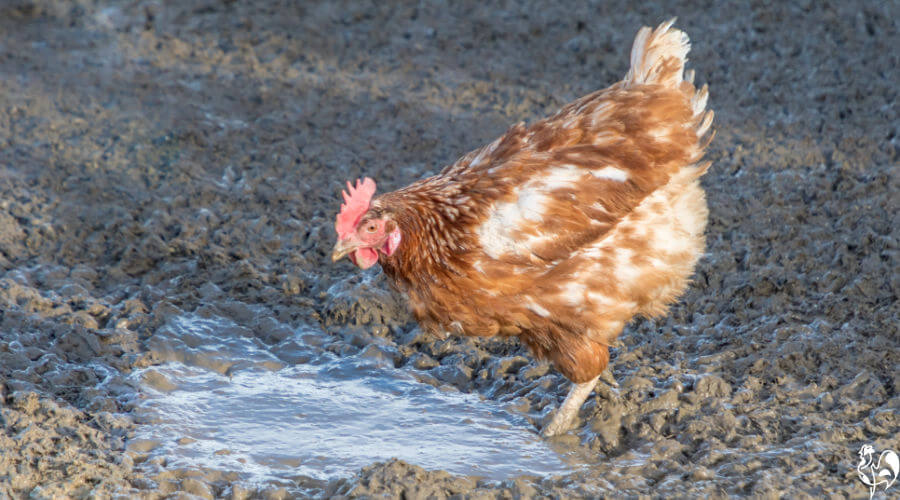 One of my Red Stars enjoying a mud bath for her feet.
One of my Red Stars enjoying a mud bath for her feet.How to fix it: provide adequate drainage.
If moving isn't possible, there are a couple of other options.
- Add a simple drain to take the water away. I have a simple pipe dug into the soil at the bottom of a slope which diverts water to a slope outside the run.
- It's common in this area of Italy, where the soil is very heavy clay, to simply dig a channel in the soil which again will take the water away to a point where it's not a problem.
- Make sure you choose a flooring which is free draining to improve drainage. Pea gravel is a good choice. It provides drainage and grass can grow back through it.
- Try to improve the drainage before laying flooring, though. Otherwise it may simply be washed away.
- Finally, make sure your run is kept free from spilled feed, straw and anything else which is likely to hold onto water.
Second cause of a muddy run: no protection from rain.
If you have a small coop like this, covering the run is not a problem – it already has roof.
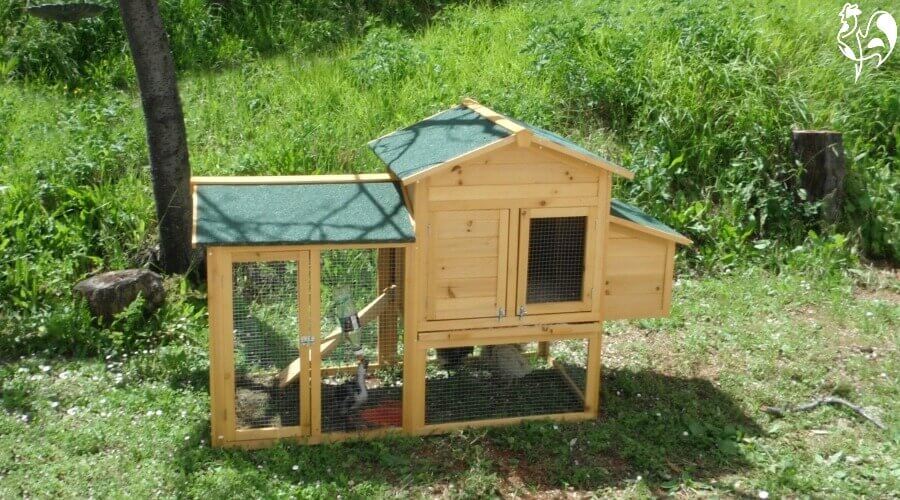 My small "chicken hospital" coop with the run covered by a roof.
My small "chicken hospital" coop with the run covered by a roof.Equally, my Eglu – Which I use for isolating new chickens – has its own heavy duty cover over part of the run, which protects from rain in winter and sun in summer.
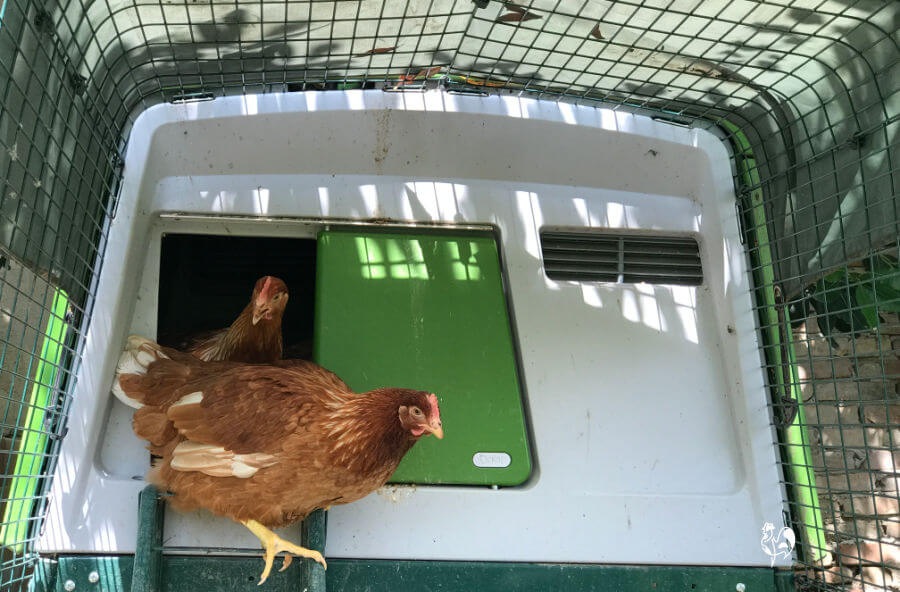 The Eglu cover works to shield from rain in winter and sun in summer.
The Eglu cover works to shield from rain in winter and sun in summer.What about if you have a large run though? It may be totally impossible to cover it all.
Solution: provide different types of cover.
Use a good quality tarpaulin to provide some cover in one part of the run. A heavy duty cover will protect from extremes of weather, particularly if it's both waterproof and UV resistant.
- If you're able to cover the whole thing, so much the better. It will also protect from the poop of wild birds which helps protect from Avian Influenza.
- If not, try at least covering as much as you can of one corner. Stretch the tarpaulin at a diagonal angle.
- However you use the cover, be sure to secure it properly with a good quality, strong bungee.
- Think about using evergreen trees as cover. If you don't have any in your run at present, plan to plant some in the spring or autumn.
Third root of mud in the run: sleet and snow.
It may look pretty, but once snow begins to melt it leaves behind a cold, wet mess. And if it falls as sleet, even worse.
When it freezes, snow combined with poor ventilation in the coop can lead to frostbite. Outside in the run, it leaves few places for chickens to forage, or stand without their feet becoming frozen.
How to fix it: preparation is everything.
- You know your own area. You'll know when snow is likely to fall. You'll also know whether it's usually accompanied by wind, which – even if you have a roof cover – will blow the snow into the run. So before that's likely to happen, take some time to prepare your run.
- Wrap a the same type of thick tarpaulin or polythene sheets around the outside of your run. If you have chain-link fencing this shouldn't be a problem. Use zip ties to hold the sheets to the fencing.
- An alternative is to buy a clear covering, so that as much light as possible enters the run. Whatever sunlight is available will naturally warm the run, making it a more pleasant environment for your flock.
- If you have a very large run (mine is over an acre!) choose a corner which is reasonably sheltered, and create a covered section.
- Add some large logs and roosts to the sheltered area and keep them free of snow, so your chickens have a way of getting off the ground and keeping their feet warm!
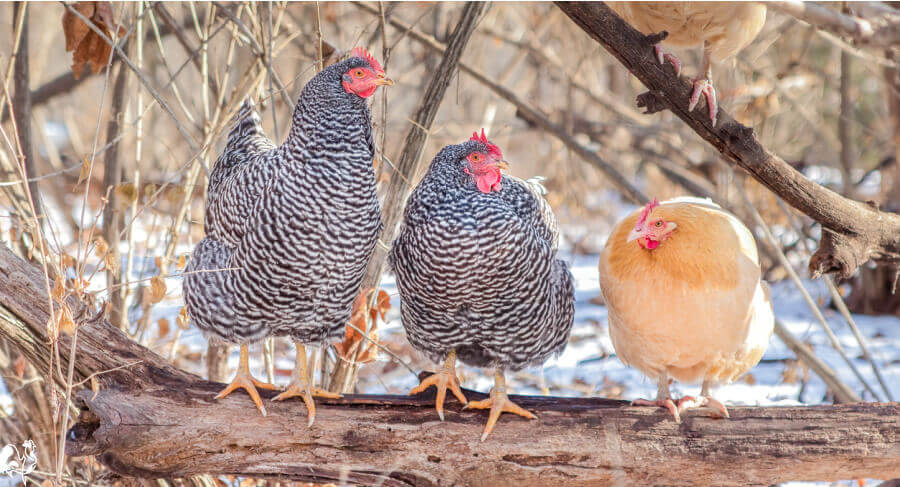 Give your chickens logs to play on, away from the snow!
Give your chickens logs to play on, away from the snow!If you found this useful, you might like these articles too!
Sources.
A lot of "facts" you'll find on the internet are often people's individual views, based on inaccurate information repeated from poor quality sources.
The information I provide in this article and others is based not just on my own experience, but on evidenced facts from scientific, peer-reviewed research and books from highly respected and experienced poultry keepers such as Gail Damerow.
Some of the trusted sources I have used in this article are these.
1. Mud runs and infectious disease risks. Pub. Health Protection Surveillance Centre, 2016.
2. American College of Veterinary Pathologists: Avian Influenza. Pub. ACVP, 2012.
3. Shapiro-Ilan et al: Definitions of pathogenicity and virulence in invertebrate pathology. Pub. Journal of Invertebrate Pathology, 2005.
- Home
- Chicken runs
- Mud
